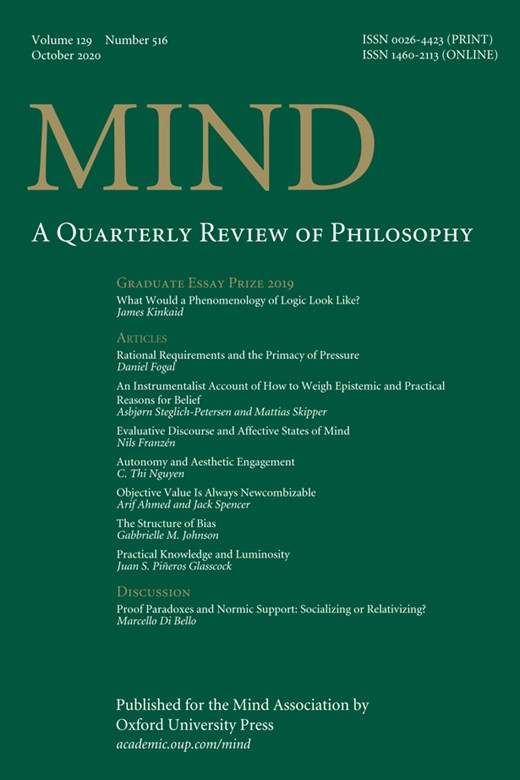-
Views
-
Cite
Cite
Daniel Fogal, Rational Requirements and the Primacy of Pressure, Mind, Volume 129, Issue 516, October 2020, Pages 1033–1070, https://doi.org/10.1093/mind/fzz038
Close - Share Icon Share
Abstract
There are at least two threads in our thought and talk about rationality, both practical and theoretical. In one sense, to be rational is to respond correctly to the reasons one has. Call this substantive rationality. In another sense, to be rational is to be coherent, or to have the right structural relations hold between one's attitudinal mental states, independently of whether those states are justified. Call this structural rationality. According to the standard view, structural rationality is associated with a distinctive set of requirements that mandate or prohibit certain combinations of attitudes, and it's in virtue of violating these requirements that incoherent agents are irrational. I think the standard view is mistaken. The goal of this paper is to explain why, and to motivate an alternative account: rather than corresponding to a set of law-like requirements, structural rationality should be seen as corresponding to a distinctive kind of pro tanto rational pressure—that is, something that comes in degrees, having both magnitude and direction. Something similar is standardly assumed to be true of substantive rationality. On the resulting picture, each dimension of rational evaluation is associated with a distinct kind of rational pressure—substantive rationality with (what I call) justificatory pressure and structural rationality with attitudinal pressure. The former is generated by one's reasons while the latter is generated by one's attitudes. Requirements turn out to be at best a footnote in the theory of rationality.



